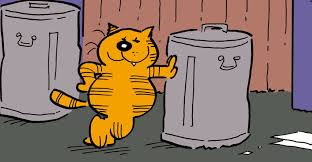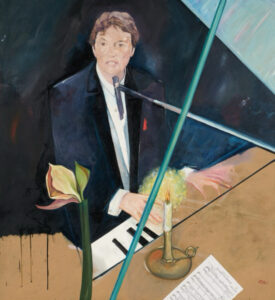
In the world of animated television shows, some series become cultural touchstones, remembered for decades, while others, despite their quality and appeal, remain underrated or overshadowed. One such animated show is “Heathcliff”. Originally based on the comic strip created by George Gately in 1973, “Heathcliff” had two prominent animated adaptations—the first from Ruby-Spears Productions in 1980, and the second, more widely recognized version, produced by DiC Entertainment in 1984. Although “Heathcliff” had a loyal fan base during its run, it never reached the same iconic status as its feline counterpart “Garfield” or other animated classics from that era.
However, in the ever-evolving landscape of media and pop culture, what is old can be new again. As 2024 approaches, there are signs that “Heathcliff” may be on the verge of a revival, or at least deserving of one. With nostalgia continuing to play a significant role in modern content trends, the possibility of a “Heathcliff” resurgence could be real. In this blog, we will explore why “Heathcliff” remains an underrated gem in the world of animated television, what has contributed to its relative obscurity, and how the current media landscape could help this iconic cat pounce back into the spotlight.
The Original “Heathcliff” Legacy: What Made the Show Special
Before diving into the potential future of “Heathcliff”, it’s important to understand what made the show special in the first place. The “Heathcliff” comic strip had already been running for seven years before its first animated series debuted, which helped to build an audience that was familiar with the character. Heathcliff, an orange tabby cat with a tough, street-smart attitude, became a beloved character for his mischievousness, cleverness, and endless ability to outsmart those around him—be it neighborhood dogs, local humans, or even other cats. He had a distinct charm, embodying the rebellious yet lovable archetype that endeared him to fans of all ages.
The 1980 animated series from Ruby-Spears Productions was a relatively short-lived adaptation, running only for two seasons. Despite its brevity, this version of the show stayed true to the humor and tone of the comic strip, featuring Heathcliff in various escapades across the city as he stirred up trouble and faced challenges in his typical cocky, street-savvy manner. However, it was the second animated series, “Heathcliff and The Catillac Cats”, produced by DiC Entertainment, that would become more widely known and continue to have lasting appeal.
In “Heathcliff and The Catillac Cats”, the show was split into two segments: the first focused on Heathcliff’s adventures, while the second revolved around a separate group of characters known as the Catillac Cats, led by the suave, beatnik-inspired feline Riff-Raff. This structure gave viewers a more diverse set of stories, with Heathcliff’s irreverence and hijinks in one half of the show, and the Catillac Cats’ cool, underground antics in the other.
The unique appeal of “Heathcliff” lay in its combination of slapstick comedy, witty dialogue, and relatable yet quirky characters. Whether it was Heathcliff’s endless rivalry with neighborhood dogs, his attempts to woo the beautiful Sonja, or Riff-Raff’s fast-talking schemes, the show provided plenty of entertainment for its audience. And while Heathcliff shared some similarities with the more widely recognized “Garfield”, he was distinctly different: Heathcliff was more action-oriented, more streetwise, and perhaps a bit edgier in his brand of humor.
Why “Heathcliff” Became Underrated
Despite its charm and entertainment value, “Heathcliff” never reached the level of mainstream success that shows like “Garfield and Friends” or “The Smurfs” enjoyed in the 1980s and 1990s. Several factors contributed to this.
Took by Garfield:
One of the biggest reasons for “Heathcliff’s” relative obscurity is that it was constantly compared to “Garfield”, another orange tabby cat who dominated the pop culture landscape. Created in 1978 by Jim Davis, “Garfield” quickly became a household name through comic strips, TV specials, and a hit animated series. Garfield’s brand of lazy, sarcastic humor was a sharp contrast to Heathcliff’s more active and mischievous personality, and it seemed to resonate more with the broader audience at the time. As a result, Heathcliff, despite being created five years earlier, was frequently viewed as a lesser-known alternative to Garfield, a comparison that likely hurt his mainstream appeal.
Shorter Run and Limited Merchandise:
While “Garfield and Friends” had a longer run and became ingrained in Saturday morning cartoons for many years, “Heathcliff” had a relatively shorter run, airing from 1984 to 1988. Additionally, “Garfield” had an extensive range of merchandise, from books and toys to holiday specials, all of which helped cement the character’s place in pop culture. By contrast, “Heathcliff” didn’t have the same level of marketing or merchandise, which may have contributed to his more limited visibility.
Competing with Larger Franchises:
The 1980s and early 1990s were an era dominated by iconic animated franchises like “Transformers”, “Teenage Mutant Ninja Turtles”, and “The Smurfs”. In such a crowded market, it was difficult for a character like Heathcliff to stand out among the many larger, flashier shows that were capturing children’s imaginations. While Heathcliff’s urban, street-smart setting provided a unique flavor, it lacked the larger-than-life spectacle of some of its animated competitors.
Aging Appeal:
As the 1990s approached, tastes in animation began to shift. Audiences increasingly gravitated towards shows that were more sophisticated in their storytelling or more heavily branded as toy-driven franchises. As a result, shows like “Heathcliff”, which relied on episodic mischief and humor, fell somewhat out of favor. While the show retained a loyal fan base, it didn’t have the same staying power as other cartoons of its era.
The Potential for a “Heathcliff” Resurgence in 2024
Despite being underrated during its original run, “Heathcliff” has the potential for a major comeback in 2024. Several factors in today’s media landscape suggest that this could be the perfect time for *Heathcliff* to re-enter the cultural zeitgeist.
Nostalgia-Driven Content:
One of the most significant trends in entertainment over the past decade has been the resurgence of 1980s and 1990s properties, driven by nostalgia for these “simpler times.” With reboots, revivals, and homages to shows like “He-Man”, “DuckTales”, and “Animaniacs”, there is clearly a hunger for content that taps into the nostalgia of older audiences while simultaneously appealing to younger viewers. “Heathcliff”, as a show that carries a distinct 1980s charm, could fit perfectly within this trend. A revival of “Heathcliff” would appeal not only to those who watched the original series as children but also to a new generation of kids who have grown up in an era of animated reboots and revivals.
The Growing Popularity of Feline Characters:
Cats have always held a special place in popular culture, and in recent years, feline characters have experienced a resurgence, particularly on digital platforms. From viral internet cats to animated films like “The Secret Life of Pets” and “Puss in Boots”, cats are once again becoming cultural icons. “Heathcliff”, with his brash, mischievous personality, is well-positioned to capitalize on this trend. His streetwise antics could resonate with today’s audiences, particularly in a world where unconventional, rebellious characters are often celebrated.
Potential for Streaming Success:
The rise of streaming platforms like Netflix, Hulu, and Disney+ has opened new doors for animated content. Shows that were once overlooked or forgotten can now find new life through digital distribution, often reaching wider audiences than they did during their original airings. A “Heathcliff” revival, or even a rebooted series, could find success on a streaming platform, where viewers have the freedom to binge-watch episodes and rediscover the show at their own pace. Additionally, streaming platforms often encourage experimental storytelling, which could give “Heathcliff” the creative freedom to evolve and appeal to a more modern sensibility.
Expansion into New Media:
One area where “Heathcliff” could find new success is in interactive media and video games. The combination of nostalgia and the increasing popularity of casual and mobile games could create an opportunity for a “Heathcliff” video game or app. Whether it’s an arcade-style platformer that mimics Heathcliff’s street adventures or a puzzle game featuring Riff-Raff and the Catillac Cats, interactive media could help reintroduce the characters to a new audience.
A Focus on Environmental Themes:
In 2024, environmentalism and urban sustainability are likely to remain significant societal issues. Given Heathcliff’s urban, street-oriented setting, a modern version of the show could explore themes related to city life, environmentalism, and the importance of community. These themes could resonate with younger audiences who are increasingly concerned with the environment, while also providing a new angle for the show’s humor and storytelling.
Imagining a 2024 “Heathcliff” Revival
If Heathcliff were to make a comeback in 2024, what might it look like? One possibility is a continuation of the original series, with updated animation and modernized storytelling, while still maintaining the core elements that made “Heathcliff” unique. Heathcliff’s personality as a street-smart, mischievous cat would remain central to the show, but the new series could delve deeper into his relationships with other characters, offering more complex narratives and character development.
Alternatively, a reboot could introduce entirely new characters and settings while keeping the essence of Heathcliff’s rebellious charm. Riff-Raff and the Catillac Cats could continue to provide a secondary storyline, perhaps updated for a more contemporary audience. The show could also incorporate new cultural elements, reflecting the diversity and complexity of modern urban life, while still retaining the comedic spirit of the original series.
There’s also the possibility of a full-fledged “Heathcliff” movie, either animated or live-action/CGI hybrid. With the success of films like “The Lego Movie” and “Sonic the Hedgehog” studios have demonstrated that older, sometimes overlooked characters can be revived in innovative ways for a cinematic audience.
A Sleeping Giant Ready to Awaken
“Heathcliff” may have been an underrated television show during its original run, but its potential for a revival in 2024 is undeniable. With the current media landscape being driven by nostalgia, feline popularity, and the rise of streaming platforms, “Heathcliff” is primed for a comeback. His mischievous charm, unique setting, and rebellious attitude are qualities that can resonate with today’s audiences, both young and old. Whether through a television revival, interactive media, or even a feature film, Heathcliff’s journey is far from over. This iconic streetwise cat is ready to pounce back into the cultural consciousness and claim his place as one of animation’s most memorable characters.
No comments yet.








